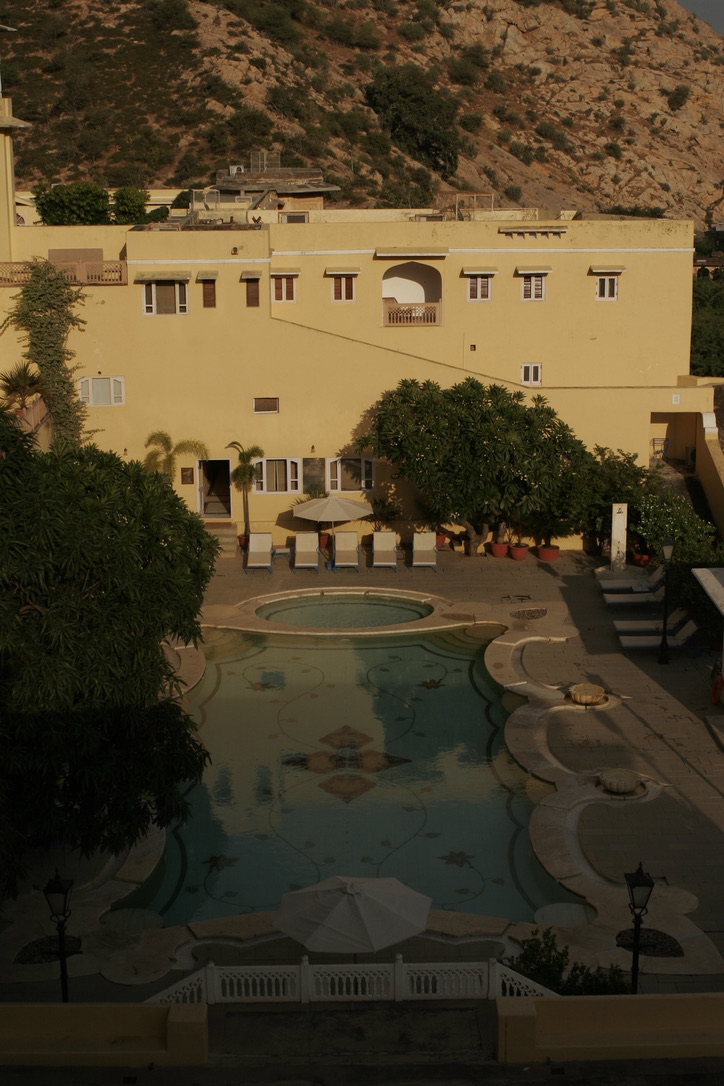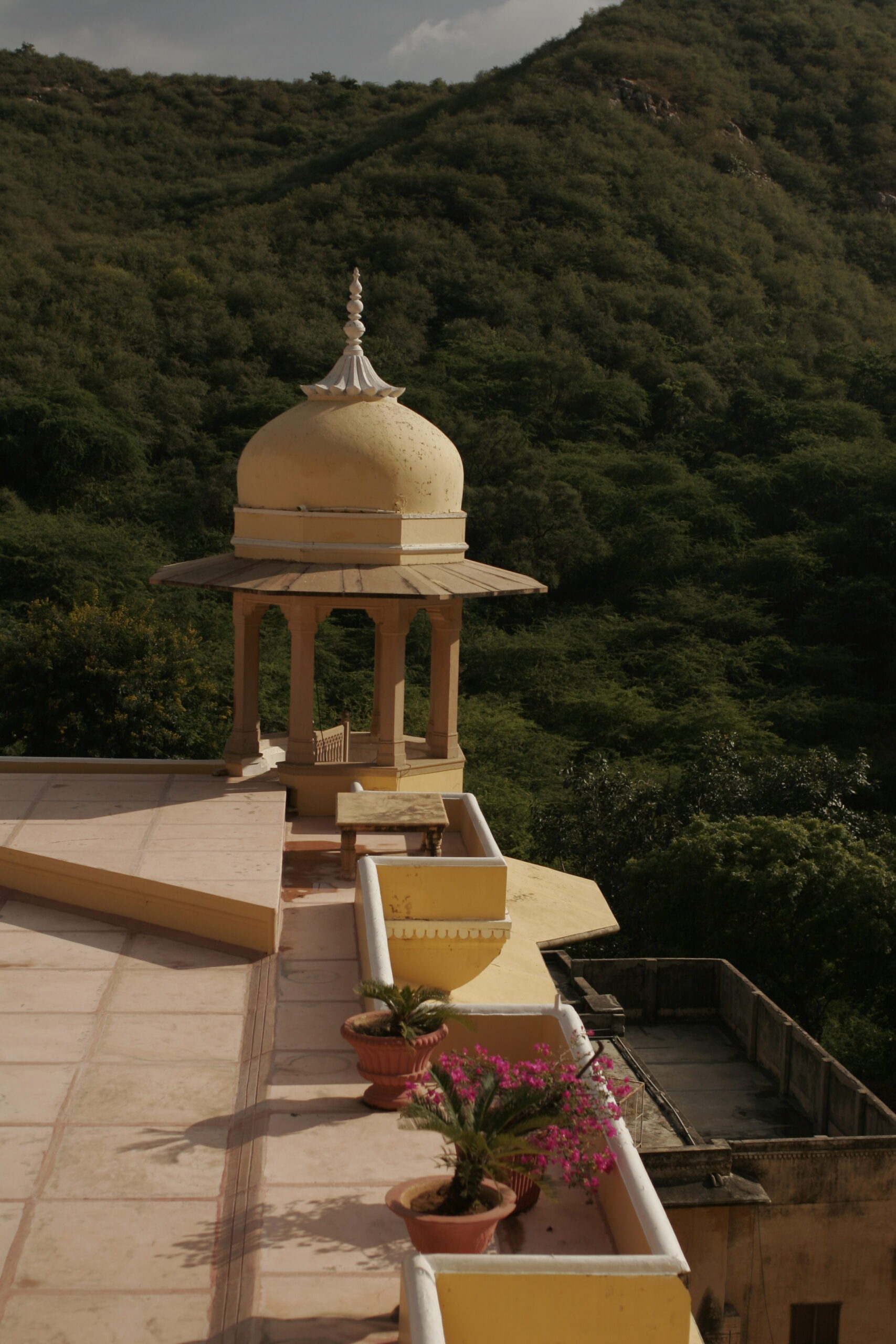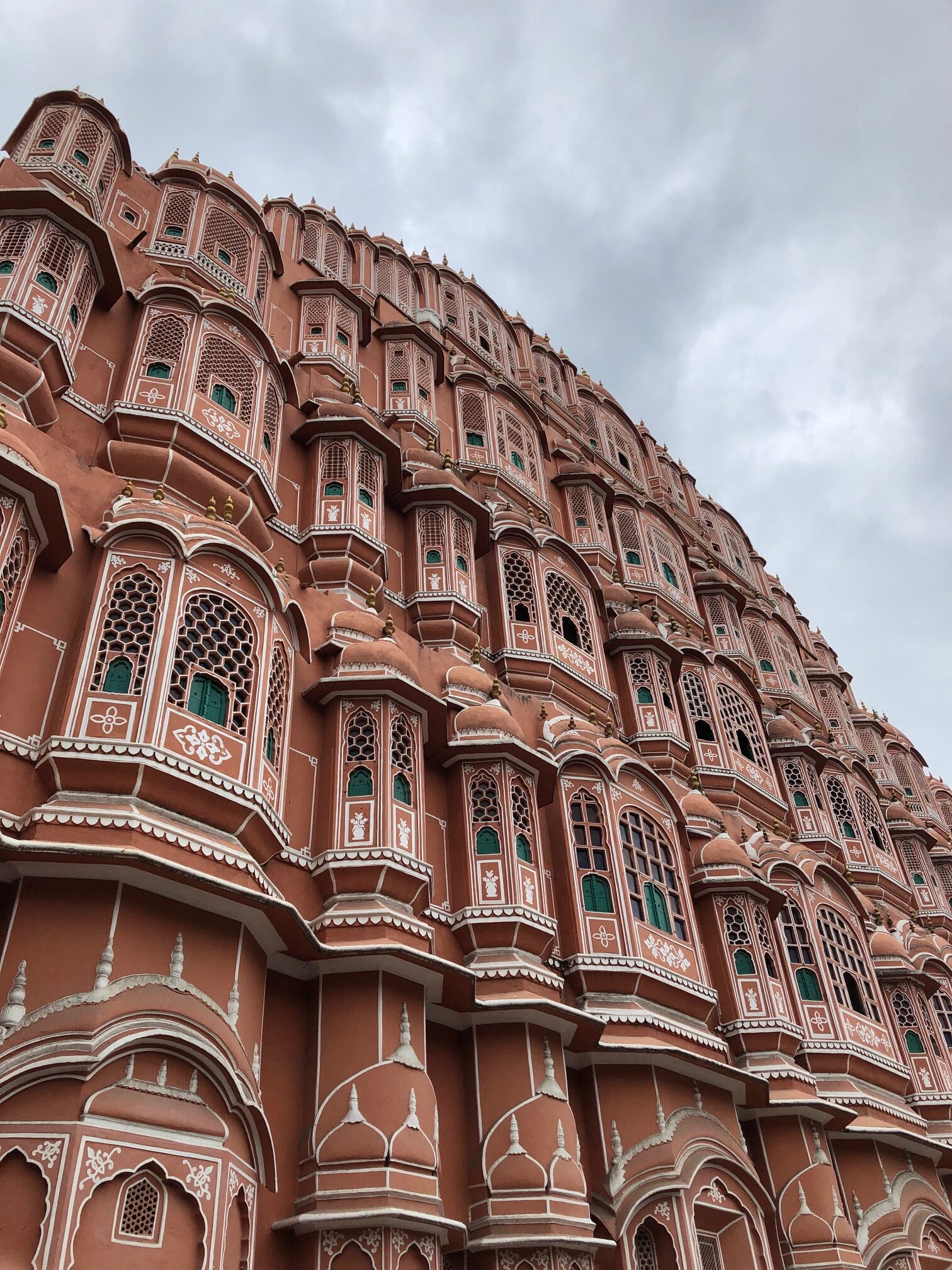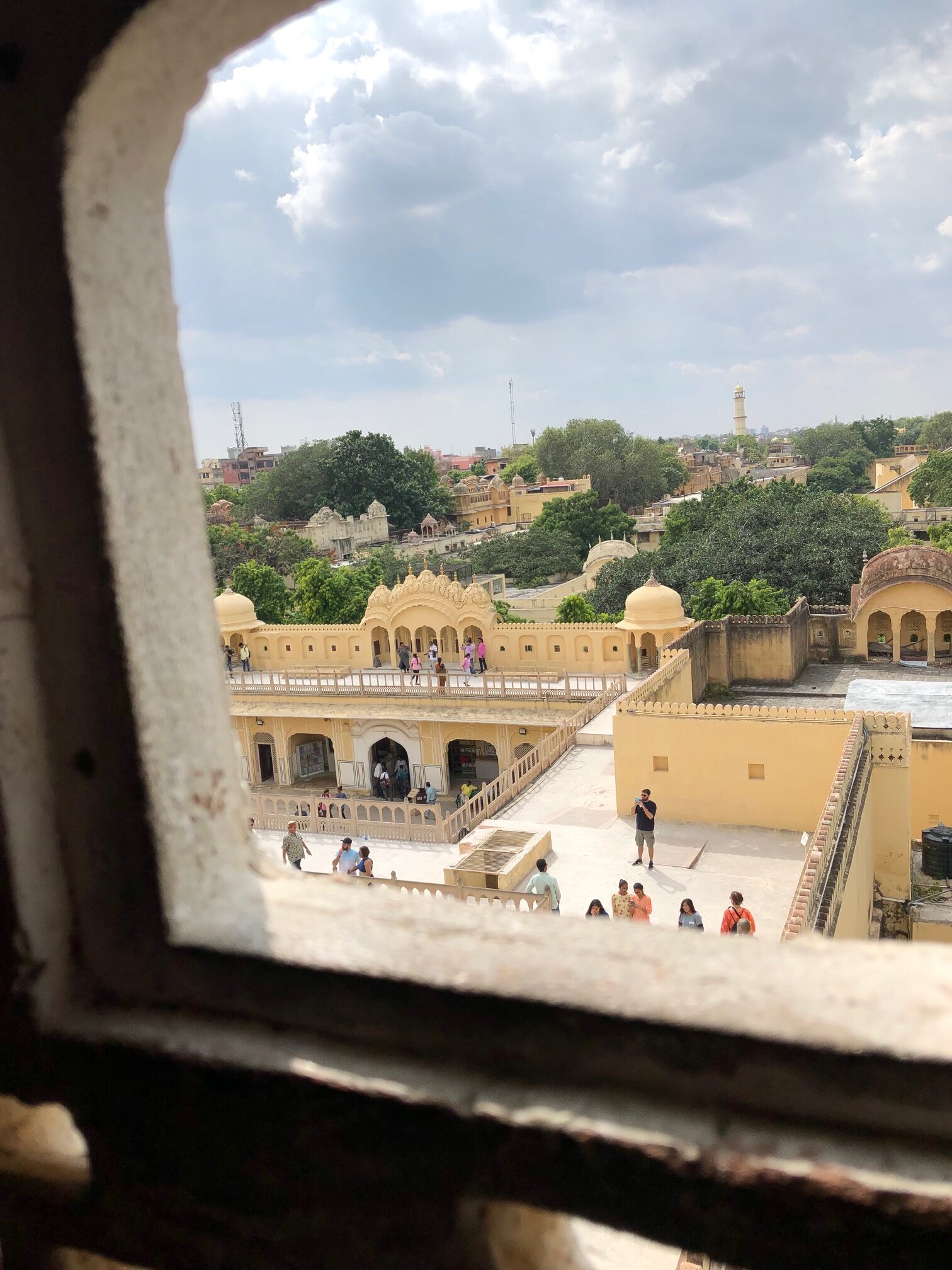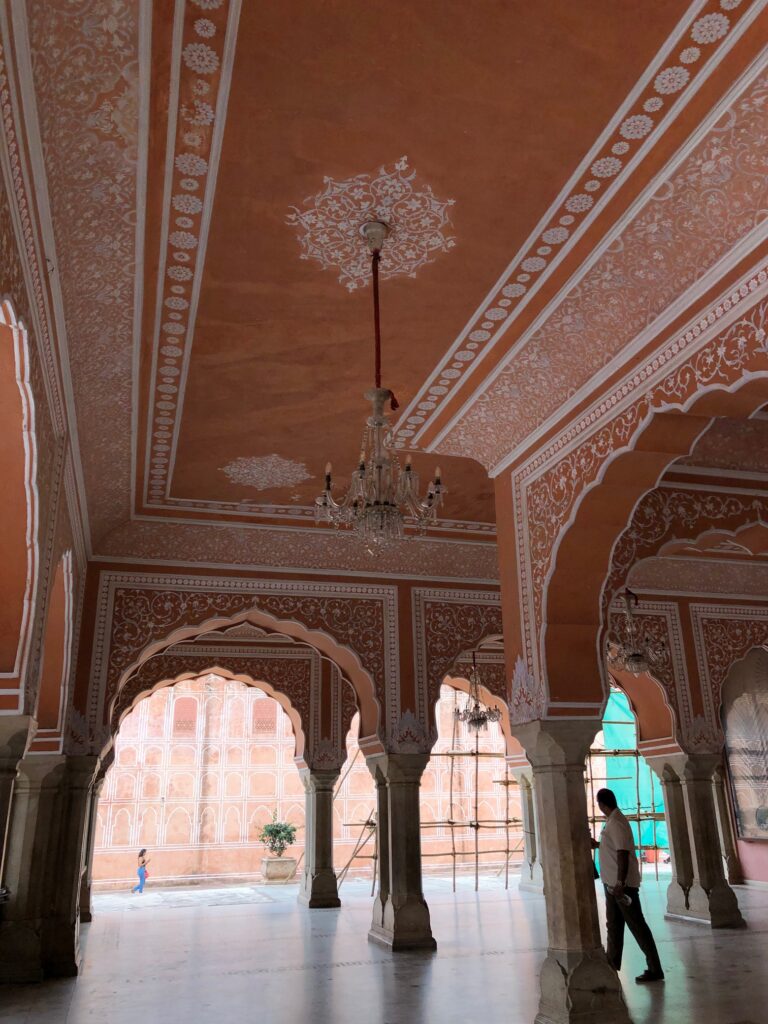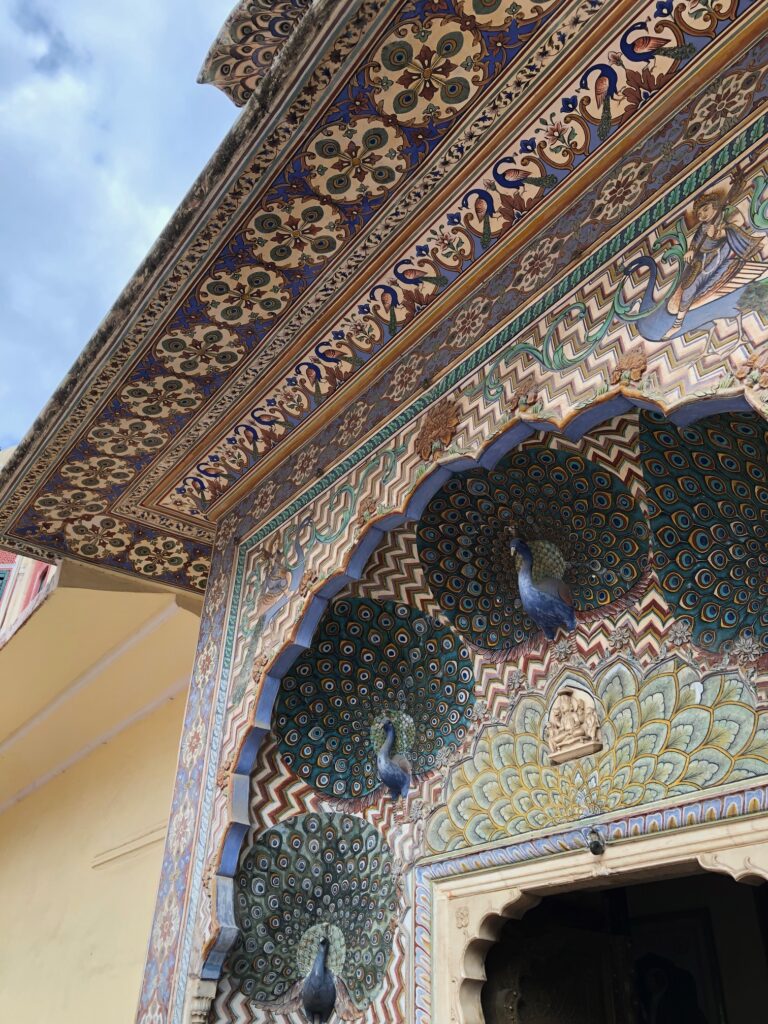Neemrana Fort-Palace is perched in Rajasthan’s Aravalli hills. A short hike up the mountainside brings you to the intricate passages and stairways of the fort that wind across multiple levels. The palace was founded in the 15th century. Today it’s a hotel, hosting guests from around India and the world. We visited Neemrana in September when the sun was still hot and swimming pools seemed especially refreshing. As the sun set and the hotel served high tea, small green parrots were flitting between the levels of the fort. The open style of the architecture meant there were many vantage points for viewing the palace and town below. After nightfall, the amphitheatre came alive with music and dance, drawing spectators on to the stage. The evening was at once peaceful and energetic, surrounded by the sun-warmed walls and stairways. In the dark, lights trace the edges of the fort, taking on a star-like quality against the night sky.


Continuing further along the highway to Jaipur, we stopped at Samode Palace, an impressive building and construction from the 17th century that, like Neemrana, was also turned into a hotel. The rooms at Samode were set up with care, each bringing to life the history of the building with photographs and short captions on the walls. Owing to its position nestled within an unexpected dip of the hills, Samode Palace offered a feeling of being completely immersed in nature. One room, the Durbar Hall, was adorned with intricate mirrors and mosaics, as well as murals covering the walls. At night and in the morning, langur monkeys with long tails sat and jumped around the patios. A tea break in the afternoon took place in one of the courtyards.
We were sitting outside at night trying to see the stars when out of the corner of my eye, I noticed the silhouette of an extremely long furry tail against the sky far to my right, nearly outside my peripheral vision. It was almost perfectly still. It took me time to recognize that it did in fact belong to a living breathing creature who was sitting above us on one of the ledges of Samode Palace. As my eyes adjusted to the dark, I could make out more of its shape and gather that it was a monkey, most likely a Langur monkey. Occasionally its tail would move just slightly. Looking to my other side, I realised that it was not the only one. There were many other tails dangling from the ledge above, all attached to monkeys, with the stillness and poise of gargoyles on the walls of cathedral. Of all the evenings of the summer, this was the most mysterious – sitting surrounded by inscrutable monkeys that call the palace and surrounding forests their home.
After these two stops along the way, the next day we arrived in Jaipur. Our first stop was Hawa Mahal, the Palace of Breezes, with small windows and many balconies peering down onto the busy street.
The nearby City Palace had on display exhibitions of the ornate clothing and imposing weapons of past maharajas. The colourful peacock door in one of the courtyards was spectacular and visitors were eager to linger there for photographs to immortalize their trip.
Our final stop before heading back was the Amer Fort situated above Maota Lake.
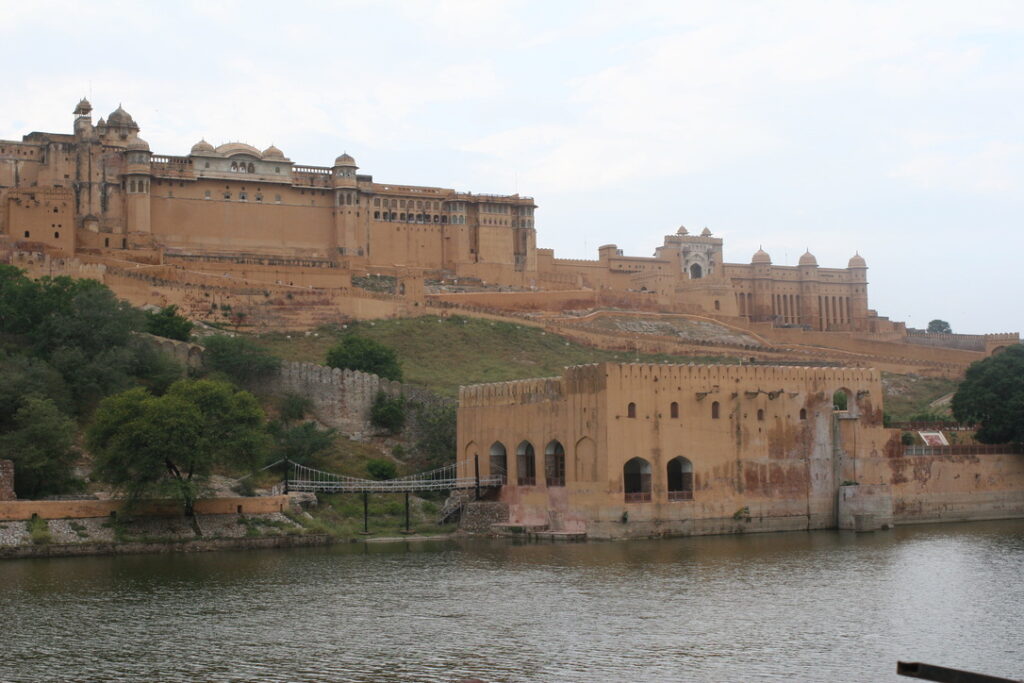
The road back was filled with traffic as we approached Delhi. A long backlog of trucks waiting to enter Delhi following the G20 Summit had turned the highway into a vast parking lot stretching from horizon to horizon and making it hard to navigate into the city. The highway stops in India are their own type of world – packed with stalls purveying foods and the chance to buy trinkets and exotic scarves. It is like entering a different dimension to walk through these roadside stops filled with wandering travellers who have also paused on their journeys, to take some tea and samosas or find a souvenir.





